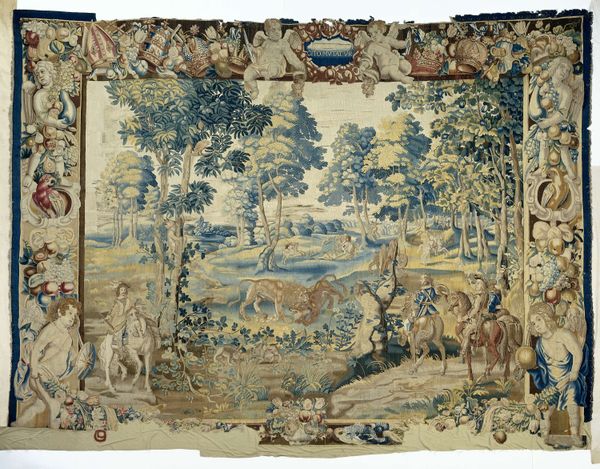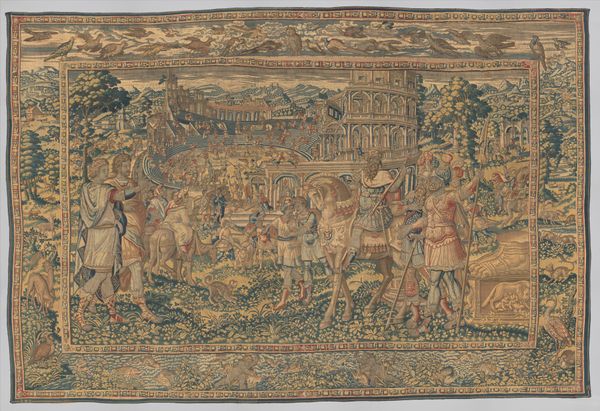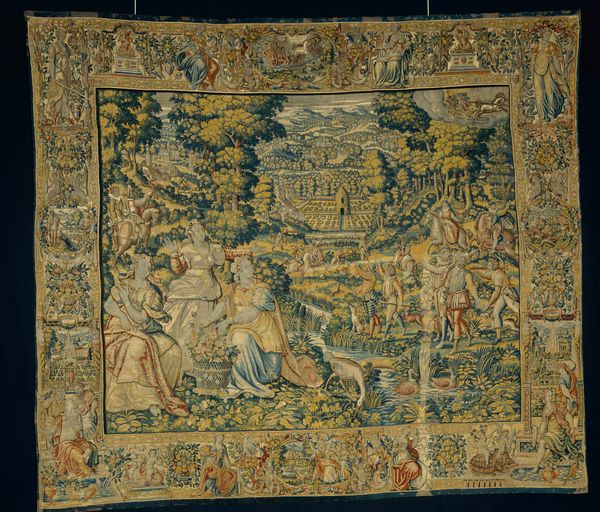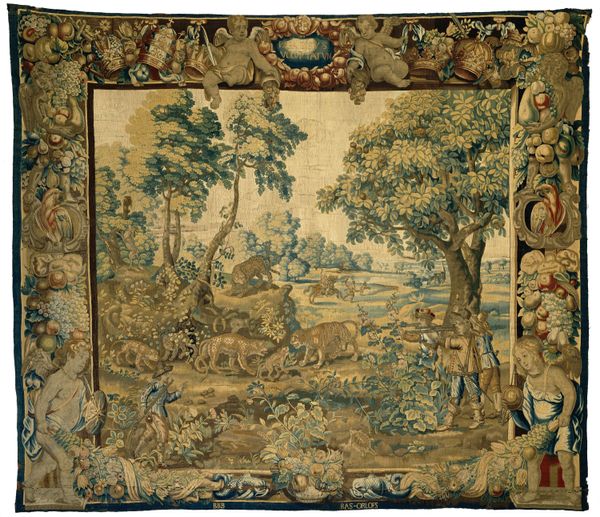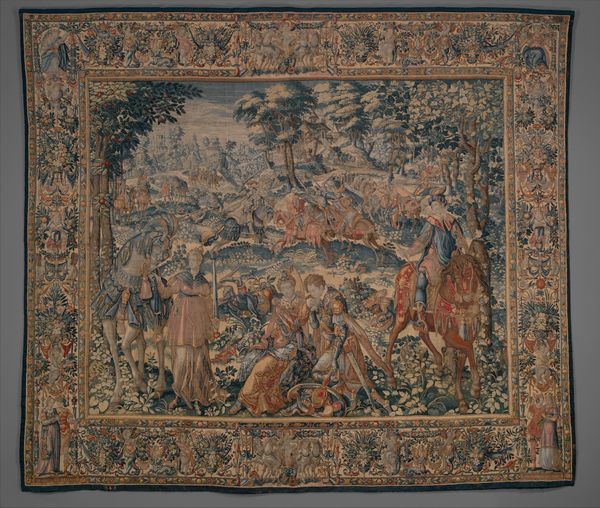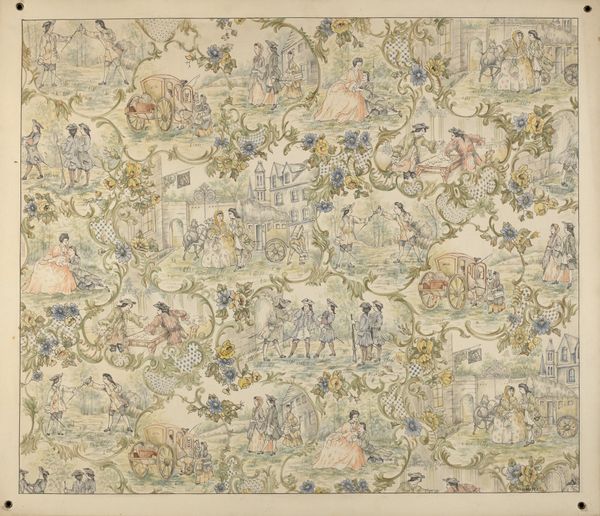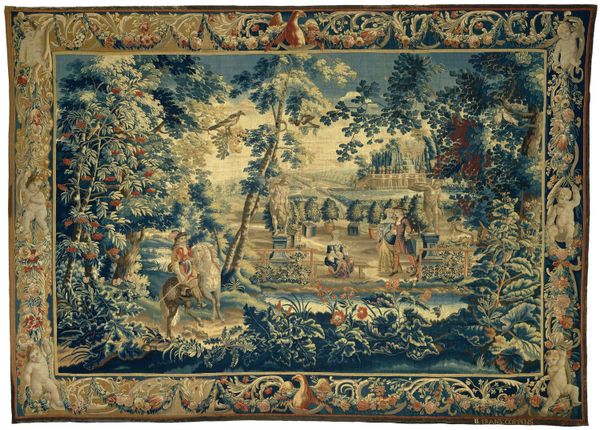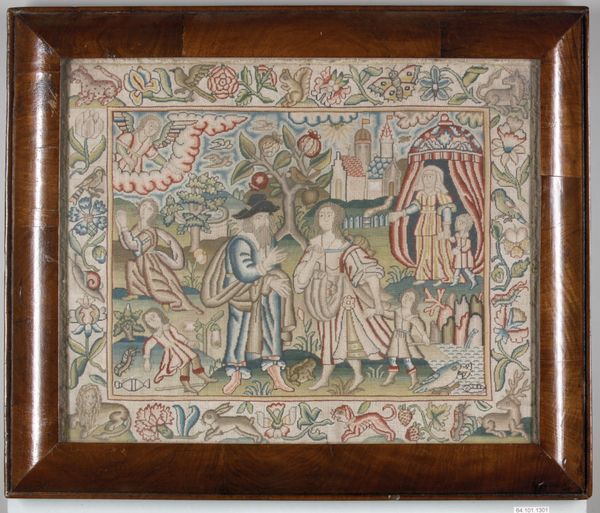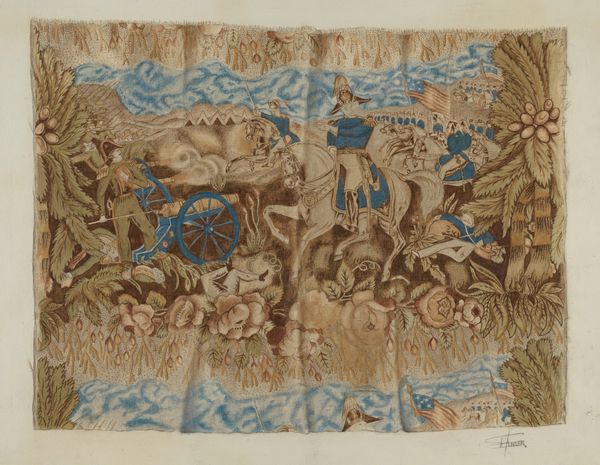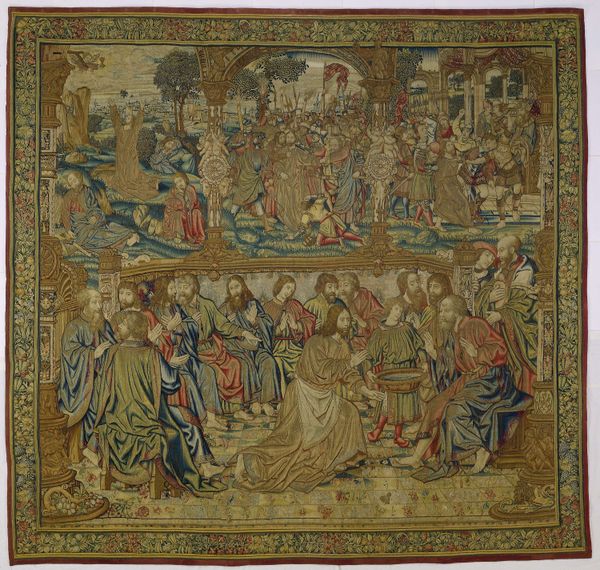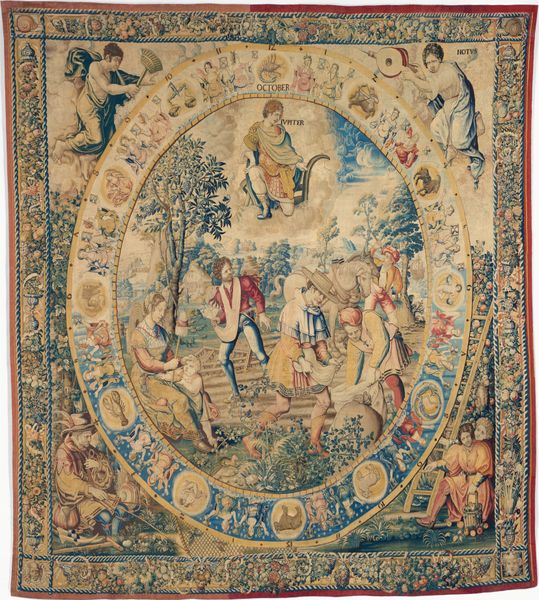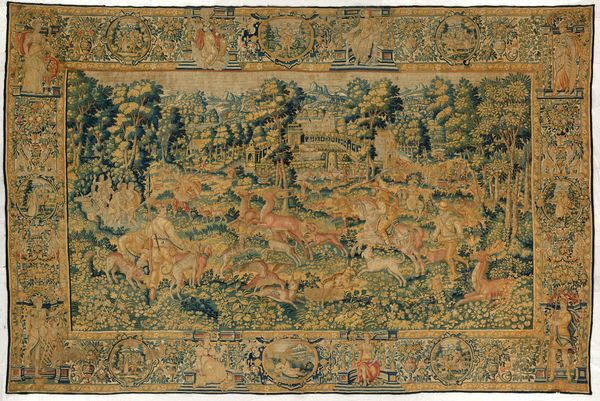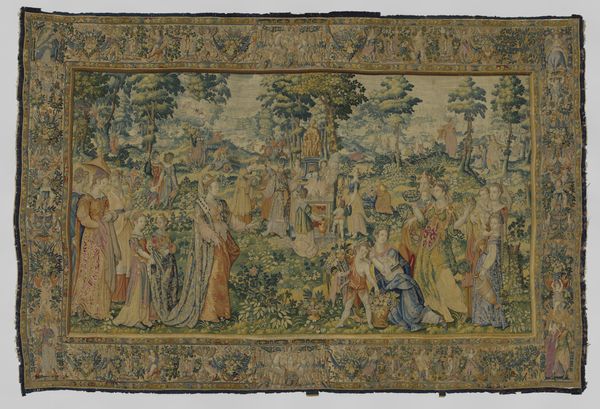
Gluttony from a set of The Seven Deadly Sins 1550 - 1575
0:00
0:00
textile
#
allegory
#
narrative-art
#
textile
#
figuration
#
11_renaissance
#
history-painting
#
decorative-art
#
mixed media
Dimensions: H. 153 x W. 267 inches 388.6 x 678.2 cm
Copyright: Public Domain
Editor: So this is "Gluttony from a set of The Seven Deadly Sins," a tapestry made between 1550 and 1575, likely by Pieter Coecke van Aelst. It's so detailed. All those figures, that landscape woven into this textile... I find it incredibly elaborate! What's your interpretation? Curator: Looking at this tapestry, I am most drawn to the immense labour that went into its creation. Think about the wool, the dyes, the looms. Each of those steps dependent on a web of human activity. It’s fascinating to consider the economic factors, too, wouldn’t you agree? The commissioning, the marketplace for tapestries like this… Editor: Definitely! I see your point about the labour. It makes me wonder about the artists versus the artisans who actually wove this. How much creative control did the weaver have, or was it purely dictated by the design? Curator: Exactly! It makes you question the very notion of authorship. And what of the patrons? Who were they trying to reach and influence with this elaborate piece of propaganda about 'gluttony?' Did it serve any real corrective purpose, or merely project its commissioners' wealth and power in contrast with supposed immoral behaviors? Editor: Interesting! The idea of the tapestry as propaganda makes me consider who would have been viewing it, too. Was it for the public or private? Curator: That distinction may have been less clearly defined in this time period. A private display was certainly made to impress a select audience. Regardless, this luxurious textile and its visual content underscore complex relationships between labor, consumption, morality, and power dynamics inherent within the production process. Editor: I never really considered those dynamics! I came in thinking about the aesthetic and moral meaning but I am going away pondering the hands that made it. Curator: Precisely. By focusing on the materiality and production, we can reveal previously obscured aspects of works like this.
Comments
No comments
Be the first to comment and join the conversation on the ultimate creative platform.
